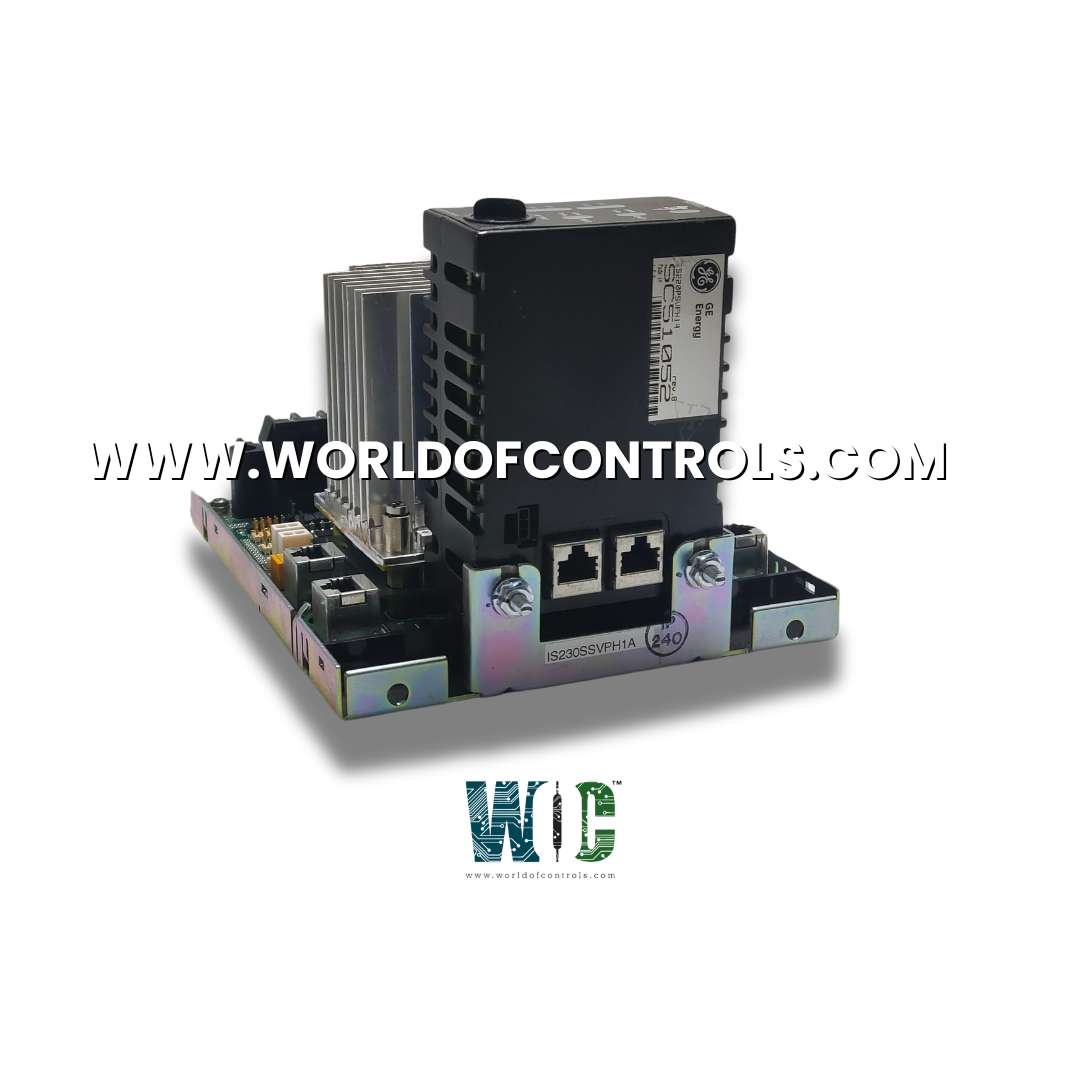
World Of Controls understands the criticality of your requirement and works towards reducing the lead time as much as possible.
IS230SSVPH1A - Servo Input/Output Terminal Board is available in stock which ships the same day.
IS230SSVPH1A - Servo Input/Output Terminal Board comes in UNUSED as well as REBUILT condition.
To avail our best deals for IS230SSVPH1A - Servo Input/Output Terminal Board, contact us and we will get back to you within 24 hours.
SPECIFICATIONS:
Part Number: IS230SSVPH1A
Manufacturer: General Electric
Series: Mark VIe
Product Type: Servo Input/Output Terminal Board
Number of inputs: 6
Number of outputs: 2
Power supply voltage: 28 V dc
Voltage Range: 14 to 32 V dc
LVDT excitation output: 3.2 ±0.2 kHz
Outputs: 24 V dc
Mounting: DIN-rail mounting
Technology: Surface mount
Operating temperature: -30 to 65°C
Size: 33.02 cm high x 17.8 cm
Repair: 3-7 Day
Availability: In Stock
Weight: 2 lbs
Country of Origin: United States
Manual: GEH-6721_Vol_II
FUNCTIONAL DESCRIPTION:
IS230SSVPH1A is a Servo Input/Output Terminal Board manufactured and designed by General Electric as part of the Mark VIe Series used in GE Distributed Control Systems. The Servo I/O (SSVP) terminal board connects to two electro-hydraulic servo valves that actuate the steam valves. Valve position is measured with linear variable differential transformers (LVDT) or linear variable differential reluctance transformers (LVDR). SSVP is designed specifically for the PSVP I/O pack and the WSVO servo driver. It does not work with the VSVO board or the PSVO pack. The SSVP is a simplex terminal board. Dual redundancy is supported by using two SSVPs and fanning the inputs externally. Likewise, for TMR redundancy, use three SSVPs and fan the LVDT inputs externally by using jumpers to send the signal from one SSVP to another SSVP. A single 28 V dc supply comes in through plug P28IN. Plugs JD1 or JD2 are for an external trip from the protection module.
INSTALLATION:
OPERATION:
Each of the servo output channels is designed to drive a single coil or parallel coils. The servo outputs are also designed to be paralleled as shown in the PSVP configuration section. Servo cable lengths up to 300 m (984 ft) are supported with a maximum two-way cable resistance of 15 Ω. Since there are many types of servo coils, a variety of bi-directional current sources are jumper-selectable.
A trip override relay K1 is provided on the terminal board, which is driven from the PPRO protection I/O pack. If an emergency overspeed condition is detected in the protection module, the K1 relay energizes, disconnects the servo output, and applies a bias to drive the control valve closed. This is only used on simplex applications to protect against the servo amplifier failing high, and is functional only concerning the servo coils driven from
CONFIGURATION:
In a simplex system, servo 1 is configured for the correct coil current with jumper JP1. Servo 2 is configured with jumper JP2. In a TMR non-pilot/cylinder system, one servo from three different SSVPs provides the drivers needed for three coils. In this case, the LVDT inputs are fanned externally to all three SSVPs. All other servo board configuration is done from the ToolboxST application.
WOC has the largest stock of OEM replacement parts for GE Distributed Control Systems. We can also repair your faulty boards and supply unused and rebuilt boards backed up with a warranty. Our team of experts is available round the clock to support your OEM needs. Our team of experts at WOC is happy to assist you with any of your automation requirements. For pricing and availability on parts and repairs, kindly contact our team by phone or email.
What is a Servo Input/Output Terminal Board?
A Servo Input/Output Terminal Board is a crucial interface used in automation and motion control systems. It acts as a bridge between a servo drive or controller and external devices such as programmable logic controllers (PLCs), sensors, actuators, or other peripherals. The board is designed to streamline connections, allowing signals to be efficiently transmitted between the servo system and its associated components.
What are the main functions of the terminal board?
The primary function of a Servo Input/Output Terminal Board is to facilitate the smooth operation of servo-driven applications by providing reliable input and output signal connections. It ensures proper signal conditioning, power distribution, and electrical isolation where necessary. The board helps in organizing wiring, reducing electrical noise, and enhancing the overall efficiency of servo motor operations in industrial and robotic applications.
Which servo drives are compatible with this terminal board?
Compatibility depends on the specific make and model of the terminal board. Some boards are designed for universal use with multiple servo drives, while others are manufacturer-specific. It is essential to check the product datasheet or consult the supplier to ensure that the terminal board you select is suitable for the servo drive you intend to use.
What input voltage does the board support?
The supported input voltage varies depending on the design and application of the terminal board. Common voltage levels for control signals include 5V, 12V, or 24V DC. Some models also feature adjustable voltage levels to accommodate different system requirements. It is recommended to verify the voltage specifications to avoid compatibility issues or potential damage to connected devices.